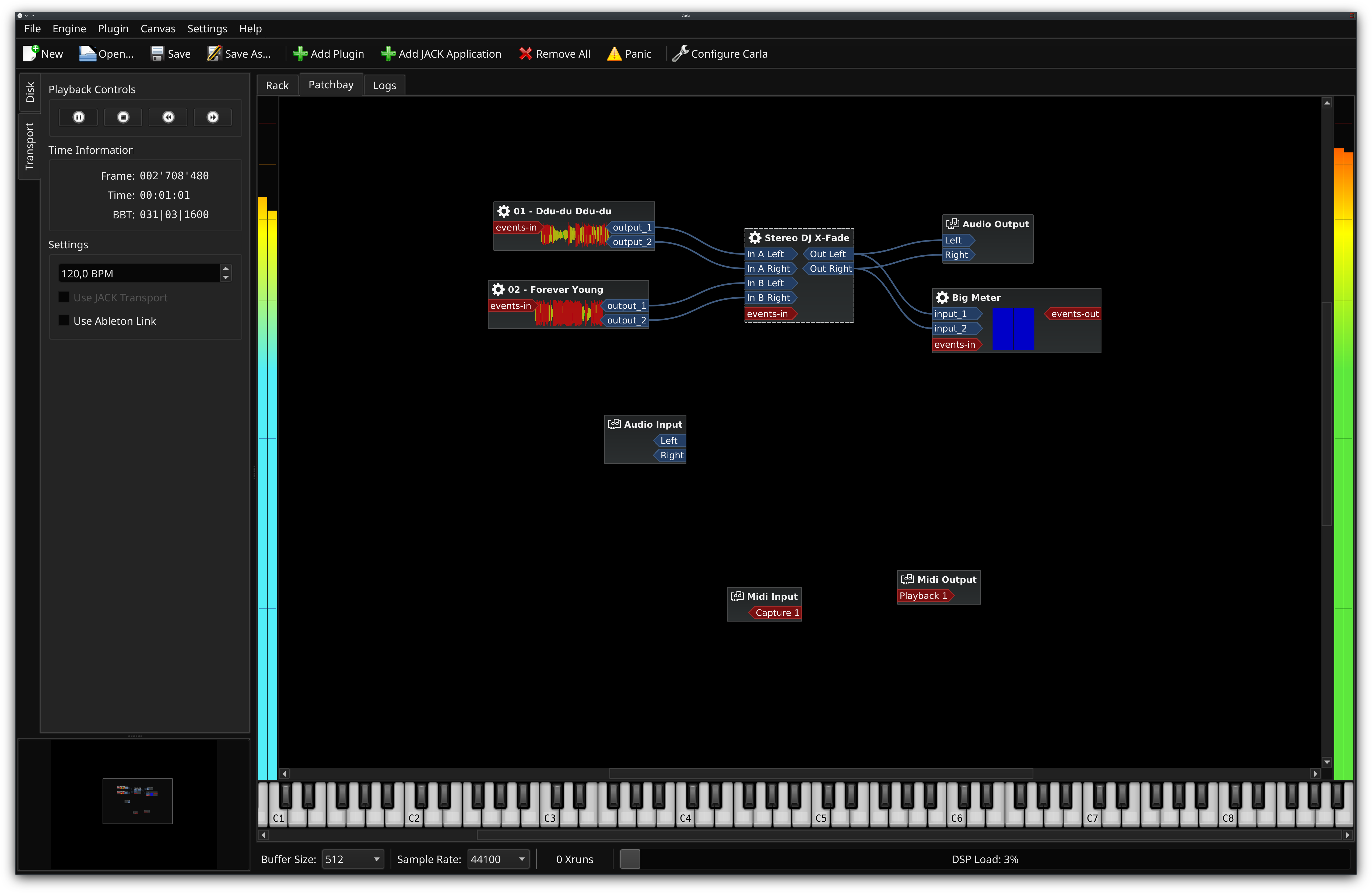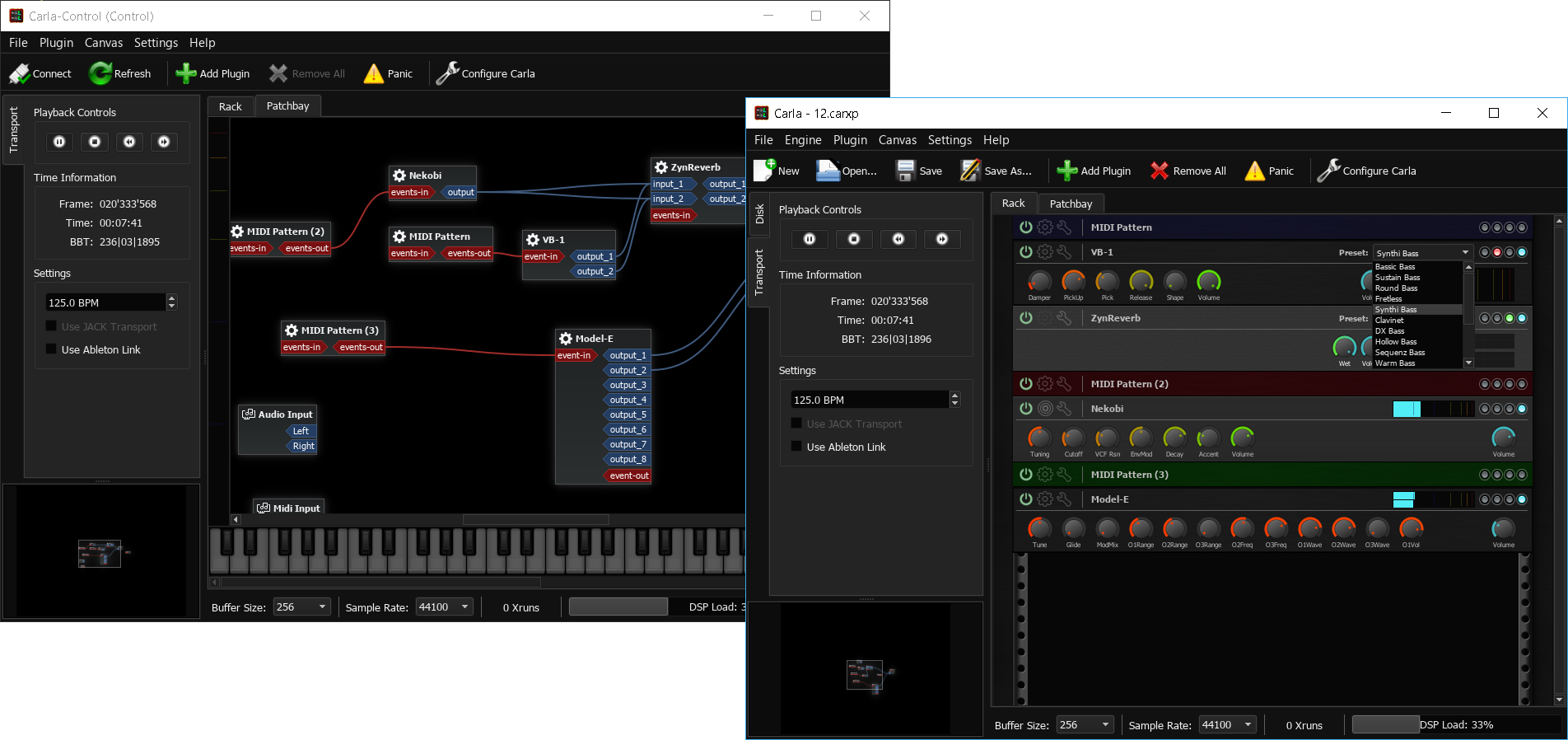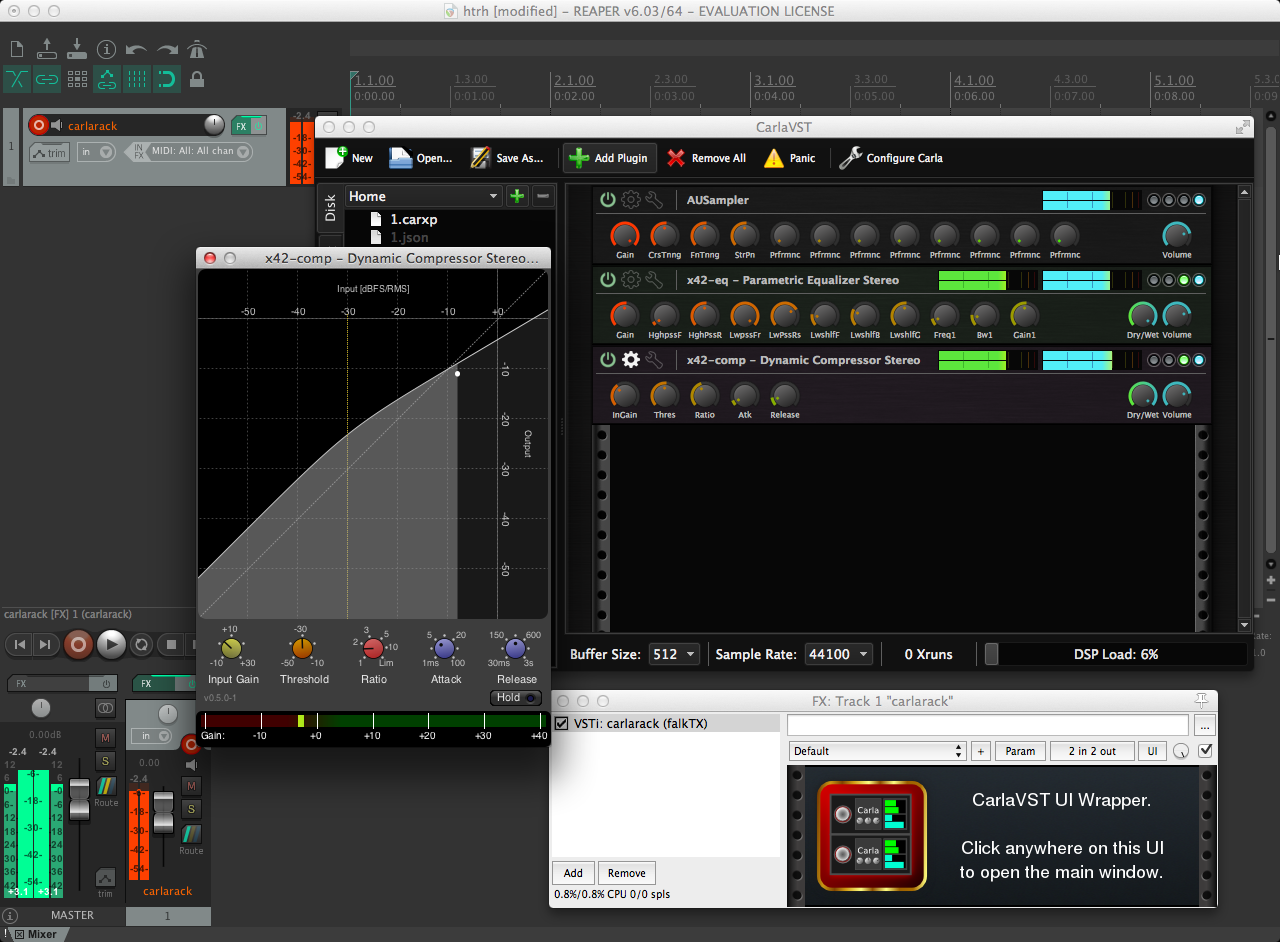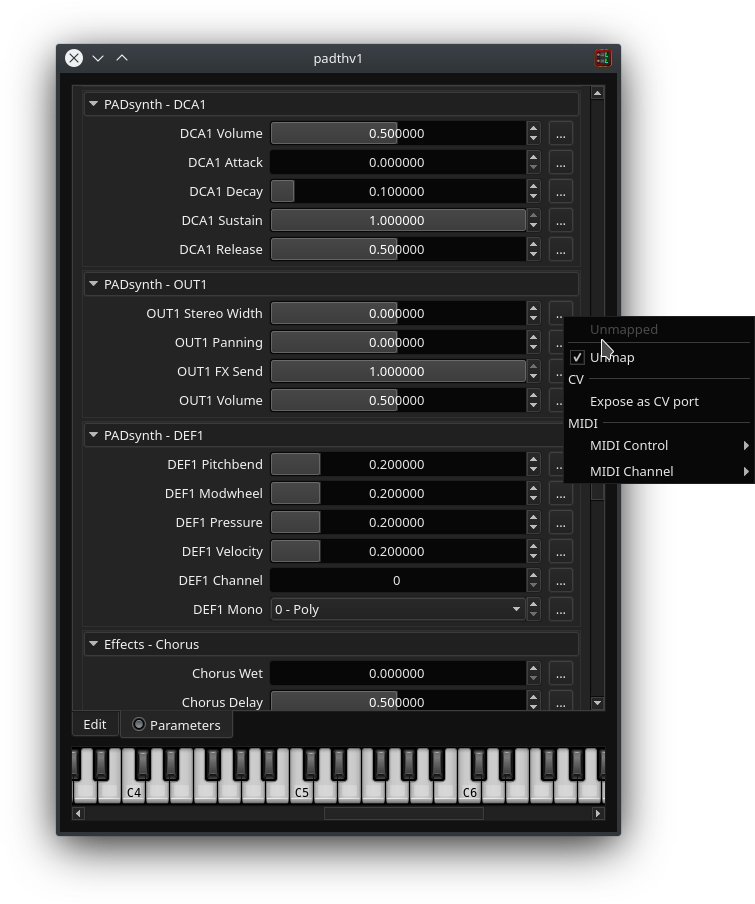KXStudio : News
>
Carla 2.1 RC1 is here!
On 2020-01-19 by falkTX
Hello again everyone, it is release day! (kinda, just a casual 4 days late...)
This is the announcement of the first release candidate of Carla 2.1.
I am skipping the beta phase as done for the 2.0 release and going straight into a Release Candidate.
This means there will be no more changes in the graphical user interface or engine/backend features, except when required for fixing bugs.
Carla projects/sessions are meant to be fully compatible between between 2.0 and 2.1 versions, except for features marked experimental.
The "native" API to access carla as plugin (as used by LMMS) is ABI and API-wise backwards compatible compatible with 2.0.
If this is not the case, consider it a bug that needs to be fixed.
As with the v2.0 release, the list of changes is a little big, so let's split it by parts.
First, the highlights and major changes, in no particular order of relevance.
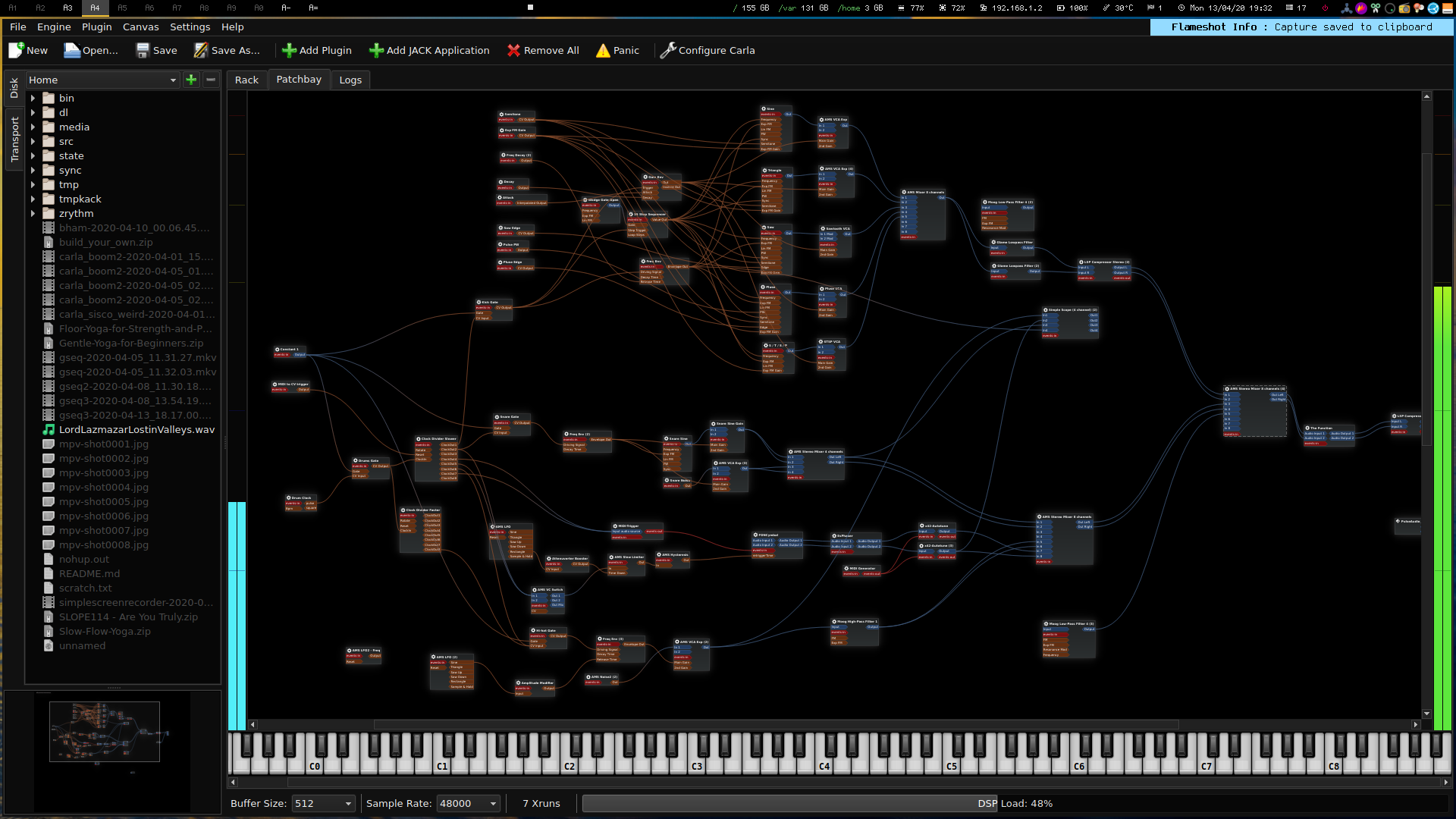
|
Better CV SupportCV ports are now supported in the internal patchbay mode, meaning you do not need to use JACK with Carla in order to use CV plugins.
Automable parameters can now be exposed as a CV port, so they can be controlled by regular CV sources or other plugins.
In order to make CV more useful by default, a new internal "MIDI to CV" plugin was added, originally created by Bram Giesen.
Also, a new variant of Carla as plugin was created that provides audio, MIDI and 5 CV ports (for each side). |
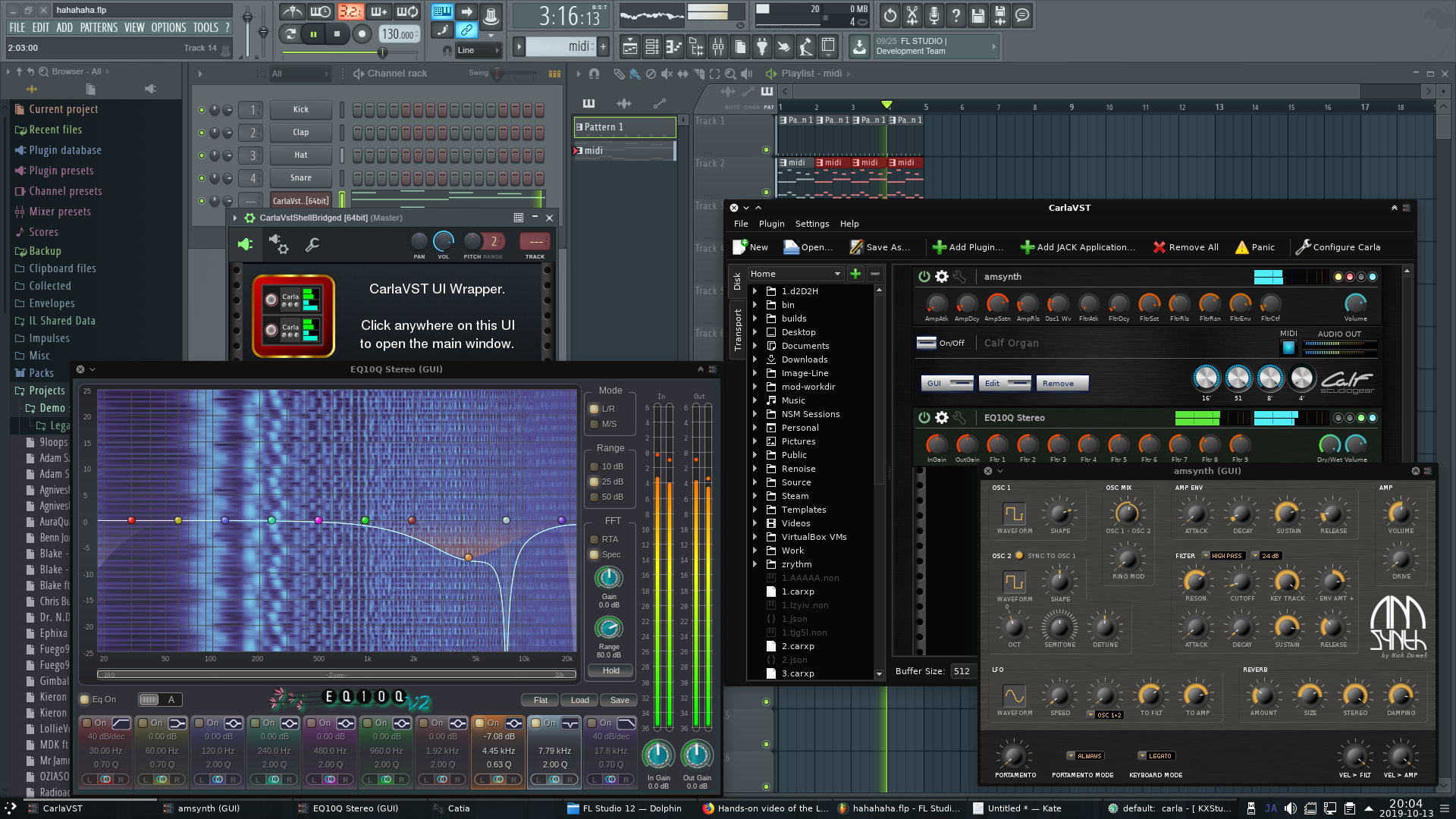
|
Wine-native bridge, sorta experimental
This is a way to load Linux binaries under Windows applications running with Wine, in case you need that for some reason
This is available in the KXStudio repositories as "carla-vst-wine" package, you need to copy /usr/lib/winvst/Carla* into your Wine VST dll folder to make it work.
Building it is kinda tricky, as it requires building a native-windows dll first, and then a few things with winegcc... I demoed this feature at Sonoj last year (2019), you can watch it as the 3rd part of this video. |
More UI changes
The rack items will dynamically show as many knobs as possible
You can now change the "skin" and color of any rack item, making it easy to identify certain plugins
Added buffer-size, sample-rate and xrun information to the status; clicking on the xrun counter will reset it to zero
Canvas changes
Right-clicking on a canvas group will show options for quickly connecting all ports to another group
Many small tweaks and fixes, plus a few extra actions, as contributed by Nikita Zlobin (to be documented on the user manual)
Support for Ardour-style inline-displays, marked experimental in this release (sadly cannot be made stable until Carla v3.0)
Carla-control and OSC rework
Carla's OSC support has been reworked, now has its own dedicated page in the settings.
Carla-Control has been extended to support all non-local-dependent features of the main Carla (like patchbay management and transport controls).
This will be extended even further in future releases.
AU and VST3 support is back, by leveraging JUCE
Disabled during a previous 2.0 beta release, support for the JUCE library was removed and replaced by a heavily stripped-down version of it. (while it was still GPlv2 licensed)
The reasons for that decision still remain relevant, but in order to keep in mind with Carla's goals, I decided to add back JUCE support - but now completely optional.
It will always be possible to build Carla without JUCE, it is only used for extra hardware and plugin format support.
In fact, Linux builds by default do not use it, as there is no need for it.
Anyway, the published macOS and Windows Carla builds do use JUCE, which means Carla supports VST3 under macOS and Windows, and AU under macOS.
As a bonus, it is now possible to show the custom control panel of ASIO devices. :)
Worth noting is that JUCE does not support VST3 under Linux at this point, so neither does Carla even if you build it yourself with JUCE enabled.
Other changes
Within a bunch of small fixes and new implementations, here are some changes that deserve to be mentioned:
- Carla now requires Qt5, can no longer work with Qt4; but can still use LV2 Qt4 UIs with its built-in bridges
- NSM is now supported for JACK applications
- Added a 16 MIDI port mode for JACK applications
- Added "Cancelable actions" during project and plugin bridges load, so they will no longer time-out; instead the user has the option to cancel them at anytime
- Initial support for LV2 parameter API
- Initial support for LV2 file paths, assuming plugin has no custom UI (click on the show-gui button to open a file dialog)
Notes for developers and packagers
- Linking against the JACK library directly is now possible by using `make JACKBRIDGE_DIRECT=true`, which allows for building Carla as an internal client
Notes for users
The code for scanning plugins had a little rework, again, making some internal data structures change.
Because of this, a full rescan of your plugins is needed after the update.
Downloads
To download Carla binaries or source code, jump on over to the KXStudio downloads section.
If you're using the KXStudio repositories, you can simply install "carla-git" (plus "carla-lv2" and "carla-vst" if you're so inclined).
Bug reports and feature requests are welcome! Jump on over to the Carla's Github project page for those.
Future and final notes
I have started a change of the Carla's frontend coding language, from Python to C++ (for performance, reliability and debugging reasons).
There are a few canvas related things, currently experimental, that can never be made stable or fast due to how Python/PyQt works.
Also Carla is not scaling very well at the moment, and the addition of CV controlled parameters and inline-displays does not help its case.
So a move of the entire frontend to C++ makes quite a lot of sense.
Whenever this is finished a new release will be made.
But it is going to be something that, even though means a lot behind the scenes, visibly nothing will change. (except performance)
Because of this, do not expect many UI related changes in Carla for the time being.
A user manual for Carla has been started.
It proved to be quite helpful for development too, as I had to justify why things are the way they are, and explain how they work too.
Now that Carla UI should not change too much for a while, it is the right time for such thing.
I personally dislike writing such things, but understand it can be quite useful.
The work-in-progress manual is at https://kx.studio/Documentation:Manual:Carla.
(Not much to see there at the moment though, give me time)
That's it.
Please remember that this is a release candidate, and not the final release.
Some issues are expected, I will do my best to fix all reports that get to me.
If I don't know about the issues though, I can't fix them. So please report any issues you find, thanks!
 Applications
Applications Plugins
Plugins
